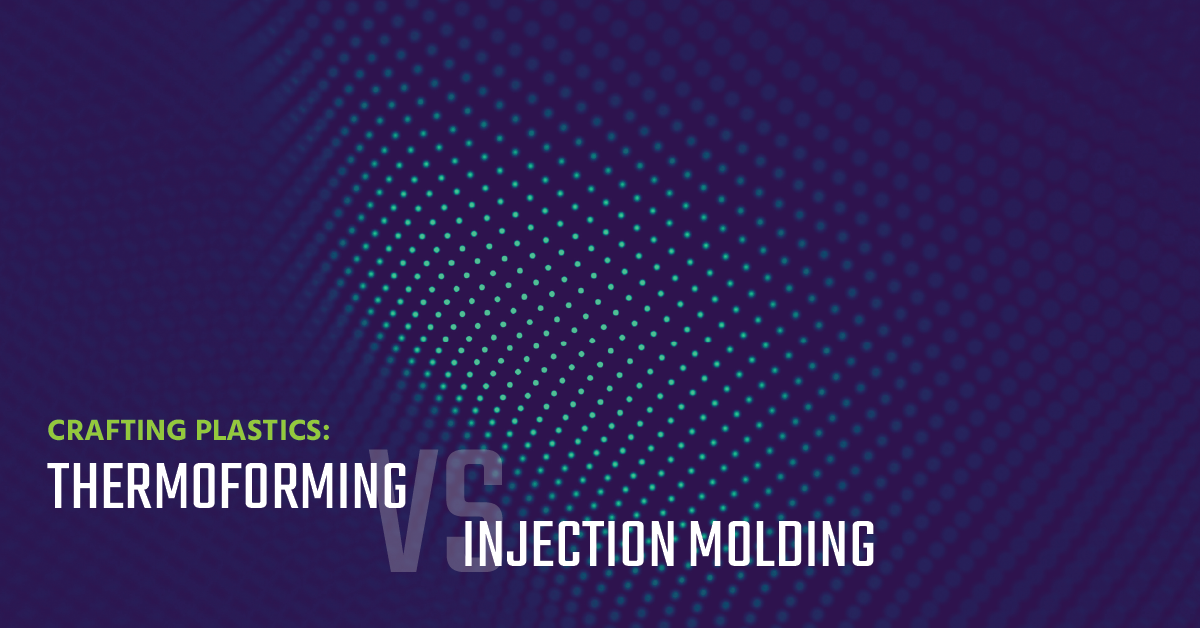For over 50 years of forming plastics, the plastic industry has continued to grow and shows no sign of slowing down anytime soon.
So, if you’re considering having plastic products made, you need to understand the two methods used for forming plastics: thermoforming and injection molding.
Keep reading to learn more about how plastics are formed so you can make the best decision for part production for your next project.
What is Thermoforming?
As its name suggests, thermoforming uses heat to soften a sheet of plastic which is then laid over or into a mold. For instance, there are a few different methods of thermoforming, including pressure forming and vacuum forming.
Some advantages of thermoforming include:
- Lower cost of tools
- Fast product development time
- Provides color and texture choices
Some disadvantages of thermoforming include:
- Can only form one side of a part
- Usually requires additional work to complete parts
- Can’t be used with all types of plastic
Generally speaking, thermoforming is used in the production of smaller quantities of parts because of the additional time it takes to finish the process.
What is Injection Molding?
With injection molding, melted plastic is injected into a split-die mold made out of stainless steel or aluminum. This is done under extreme pressure and at high temperatures. Once the molds have cooled, the completed plastic parts can be removed.
Some of the advantages of injection molding are:
- Can produce highly-detailed pieces
- Low waste rates
- Rarely requires additional steps to finish parts.
Some of the disadvantages of injection molding are:
- Doesn’t work well for large parts
- Has a higher initial cost for molds and tools
- Difficult to use for small quantities
Injection molding is most often used for smaller, more intricate parts that are needed in large quantities and in a short amount of time.
How to Decide Which Process to Use
To decide which process will be best for you depends largely on the complexity of the parts you need to produce and how many of them you need.
If you need larger, simpler parts in a smaller quantity, the thermoforming process will likely be best for you. Then, this process works particularly well for the creation of prototypes because it’s easier to make changes to the molds and final design as you work through the product creation process.
If you need smaller, detailed parts in large quantities, injection molding will probably make the most sense. These parts can be made with an automated system that helps them be produced quickly. Along, with a lower cost compared to thermoforming.
Need Help Forming Plastics?
So, now you know how thermoforming and injection molding are used in forming plastics. As you can see, each has its own advantages and disadvantages that are important to consider before deciding which method will work best for you and your project.
In conclusion, if you need help choosing a method or a manufacturing company, contact us today. Therefore, we would love to share more information with you about our own plastic-forming methods and help you pick the one that’s ideal for you.

